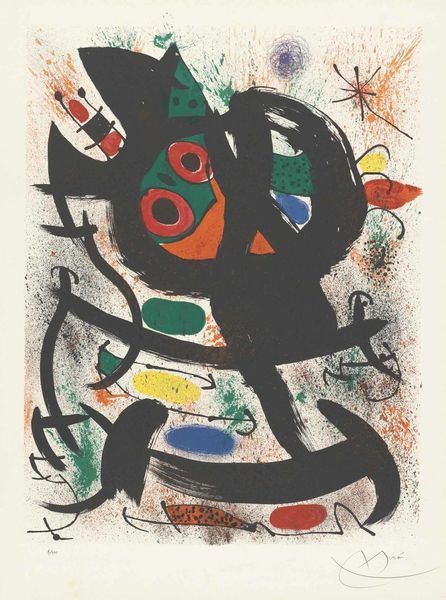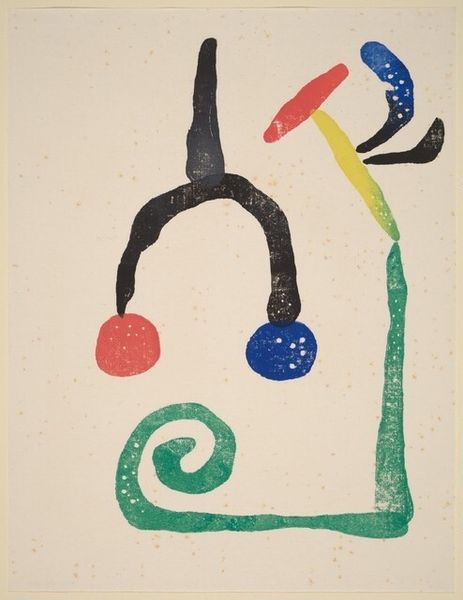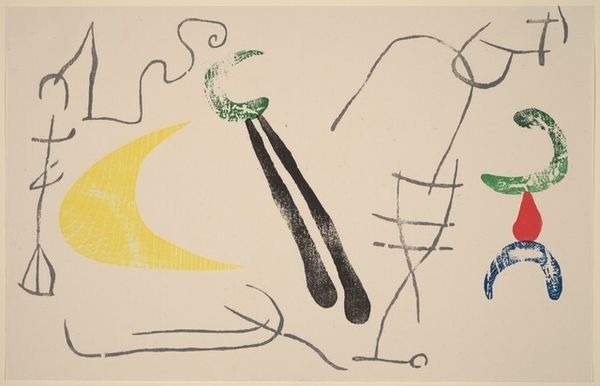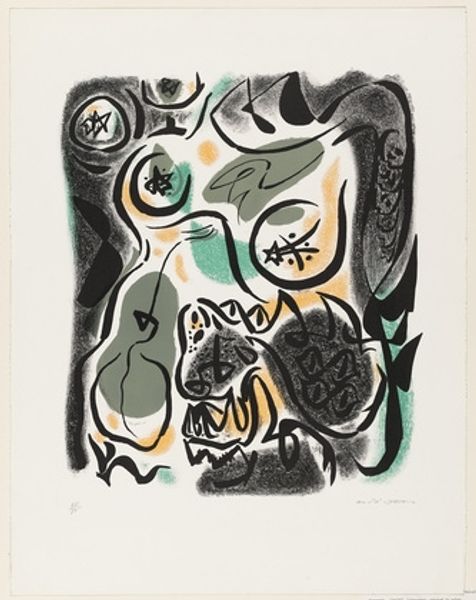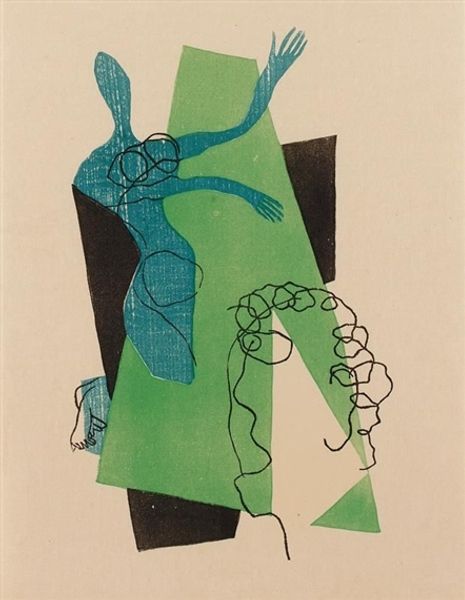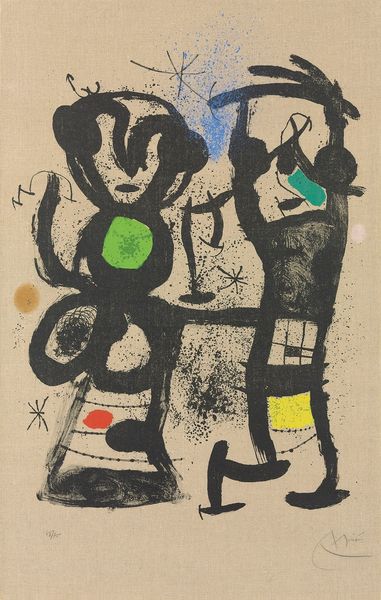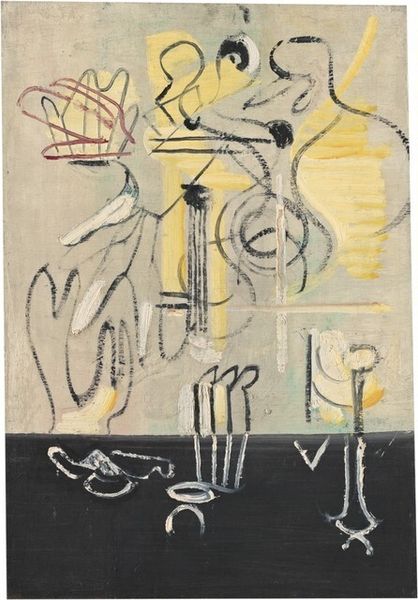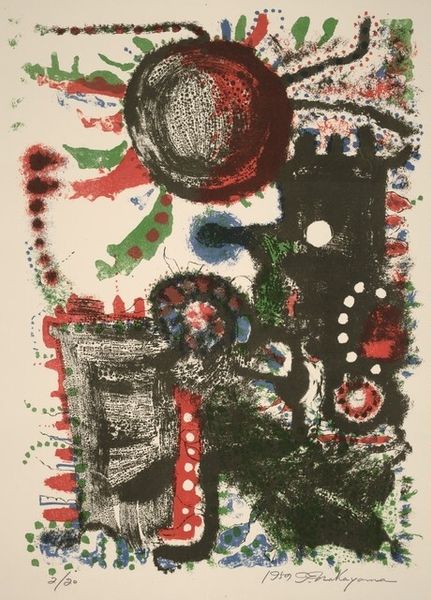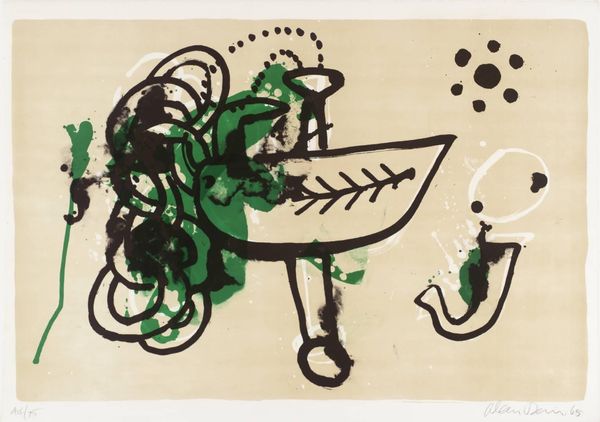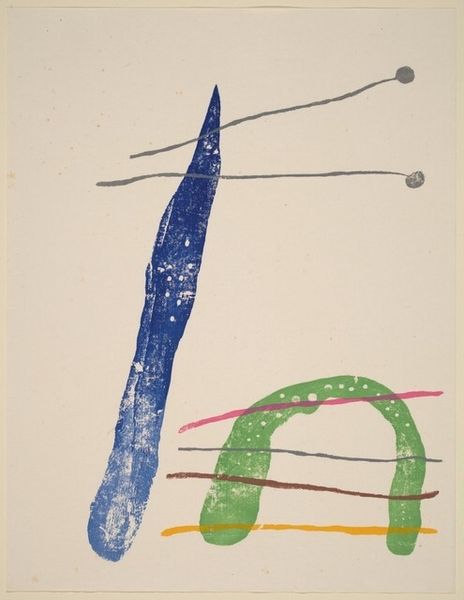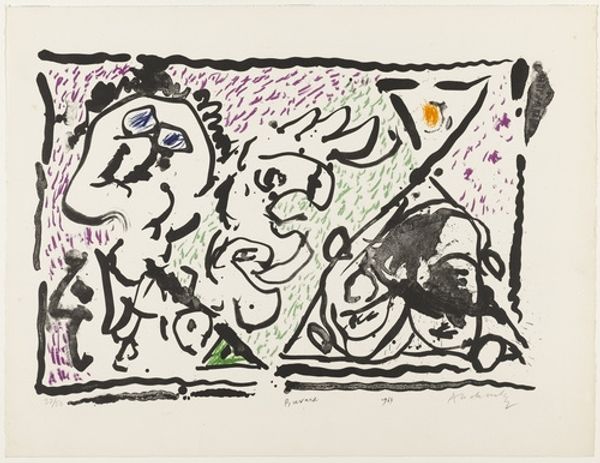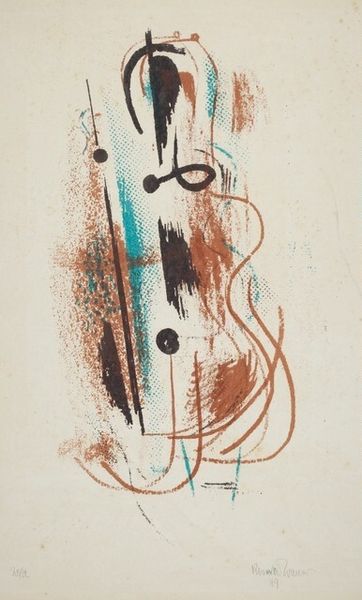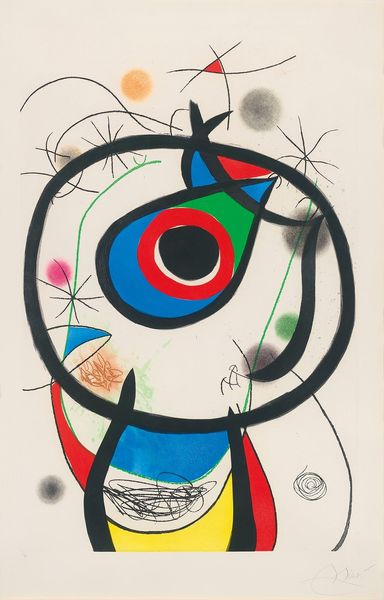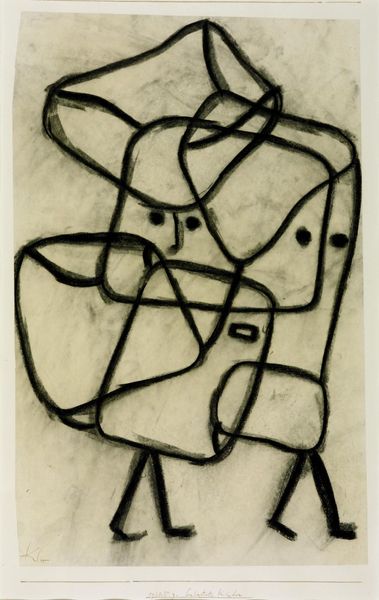
Dimensions: image: 1143 x 692 mm
Copyright: © Succession Miro/ADAGP, Paris and DACS, London 2014 | CC-BY-NC-ND 4.0 DEED, Photo: Tate
Curator: Joan Miró's lithograph, "The Great Carnivore," presents an intriguing composition. What strikes you first? Editor: The raw energy, actually. It feels primal, almost violent, despite the playful shapes and colors. There's a tension between the seemingly carefree execution and the menacing title. Curator: Precisely. Miró masterfully balances spontaneity with control. Note the stark black lines, their deliberate arrangement creating a visual structure that both defines and confines the organic forms. Editor: But is it really contained? The "carnivore," rendered as a twisting black mass, seems ready to burst, its energy disrupting any sense of formal order. It evokes the chaotic nature of power, and perhaps, its inherent destructiveness. Curator: An astute observation! The use of color, too—the juxtaposition of vibrant spots against the somber black, creates a dynamic visual rhythm. It allows us to consider the interplay between chaos and control, darkness and light. Editor: Ultimately, it speaks to the beast within us all, doesn't it? The carnivore is not just out there; it's part of our collective consciousness. Curator: Indeed, Miró offers a compelling exploration of the darker aspects of the human condition. Editor: A powerful and unsettling artwork.
